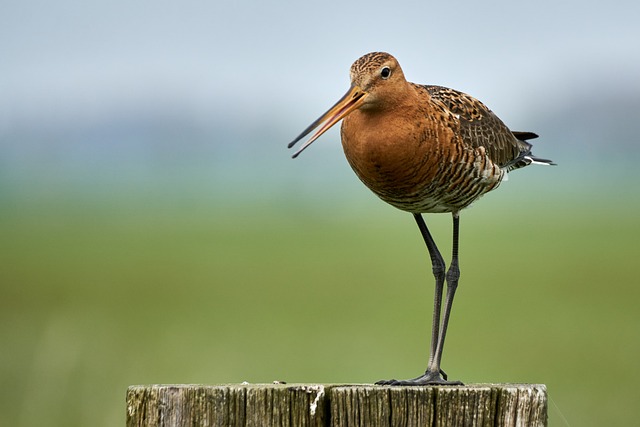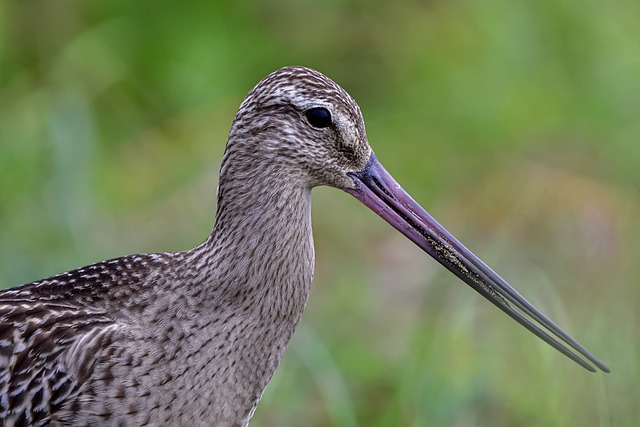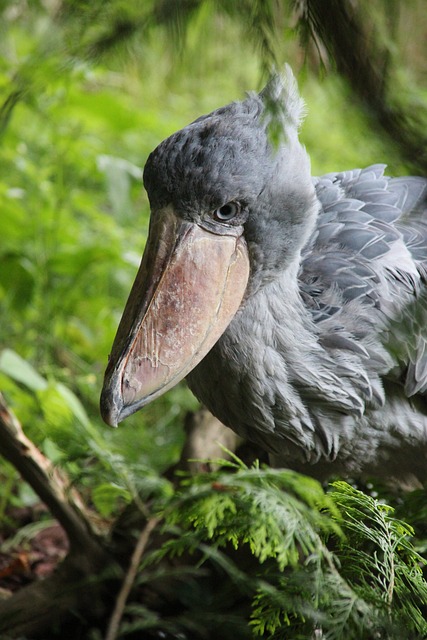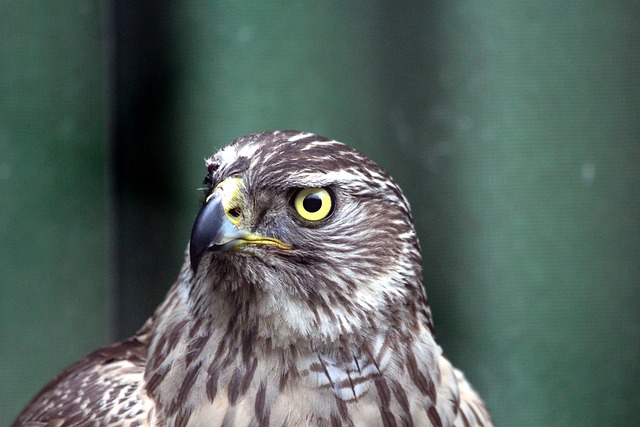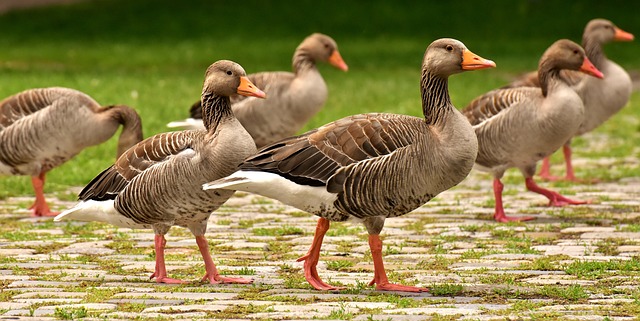Dunlin are a beautiful and mysterious species of shorebird that are found in many parts of the world. They are small, migratory shorebirds that often flock together in large numbers.
Though they are often overlooked, they are an important part of many coastal ecosystems. In this article, we will explore all you need to know about Dunlin, including their unique physical appearance, habitat and migration, diet and behaviour, predators and threats, and interesting facts.
Introduction
Dunlin have a long and ancient history, with evidence of their existence dating back to the Middle Pleistocene period some 500,000 years ago. They have been found in many different parts of the world, including Europe, Asia, and North America. As migratory birds, Dunlin travel great distances in search of food and suitable nesting grounds.
Dunlin are a species of sandpiper, which are a family of small shorebirds that have long, pointed bills and short legs. The most distinct feature of Dunlin is their unique breeding plumage, which is a distinctive combination of grey and brown with black markings. They are one of the most abundant and widespread species of shorebird, with global population estimates ranging from 30 to 50 million individuals.
Dunlin can be found in a variety of habitats, including coasts, estuaries, mudflats, marshes, and wet meadows. During the summertime, they typically inhabit shallow, coastal wetlands with abundant food sources. In the winter, Dunlin migrate to warmer, coastal climates in search of food and suitable nesting grounds.

Dunlin are omnivorous, feeding on a variety of small crustaceans, worms, and insects. They can be found foraging in shallow waters and along sandy beaches in search of food. Dunlin are also known for their social behaviour, often forming large flocks with other shorebirds.
Like many species of shorebirds, Dunlin are vulnerable to a variety of predators. Giant wading birds, such as herons and egrets, are a major threat to Dunlin, as are foxes, coyotes, and other mammalian predators. Additionally, Dunlin are susceptible to human-caused threats such as habitat destruction, pollution, and overfishing.
Finally, there are many interesting facts about Dunlin that make them one of the most fascinating species of shorebird. They have unique adaptations that allow them to survive in a wide variety of habitats. Additionally, they display unusual behaviour, such as synchronised feeding, which is when the flock of birds feed in unison to confuse predators.
In this article, we will explore everything you need to know about Dunlin, including their unique physical appearance, habitat and migration, diet and behaviour, predators and threats, and interesting facts.
Habitat and Migration
Dunlins are migratory birds, moving to and from winter and summer habitats according to the season. They breed in the Arctic tundra of Canada, Alaska, and Northern Europe, and migrate south to spend their winters in warmer climates near the coasts of Africa, the Mediterranean, and the Atlantic Ocean. During the winter they can be seen in the wetlands and mudflats of Europe, Africa, and the Middle East.
When it comes to their summer habitat, dunlins prefer coastal beaches, salt marshes, and tundra meadows. During breeding season, they aggregate in large flocks to nest and raise their young. They often build their nests in low-lying grasses and shrubs, and their chicks can often be seen foraging in nearby meadows and salt marshes.
Dunlins migrate in large flocks, often forming large V-shaped flocks. They are fast and agile flyers, and can often fly at speeds of up to 60 miles per hour. They usually migrate during the day, and prefer to fly with the wind and along the coast. They often feed during migration, stopping to feed in mud and sand flats before continuing on their journey.
Where do dunlins live? During summer months, they are most commonly found in the tundra regions of Canada, Alaska, and Northern Europe, where they breed and raise their young. During the winter months, they migrate to warmer climates, and can be found in the wetlands and mudflats of Europe, Africa, and the Middle East.
Dunlins have several migration routes. They typically migrate from their summer habitats in Canada and Alaska to winter habitats in the coastal areas of Africa and the Atlantic. They also migrate from the Arctic Ocean to the Bering Sea, and from the Bering Sea to the Pacific Coast of North America, and then south to winter habitats in the warmer climates of the Gulf of Mexico and the Caribbean Sea.
Their flight paths can be quite unpredictable, and migration routes can change from year to year, depending on the weather patterns. However, one thing is certain: dunlins are highly migratory birds, travelling long distances and often forming large flocks in the process.
Physical Appearance
Dunlin are a medium-sized wader that are easily distinguished by their unique appearance. They have a stout body and chestnut and black breeding plumage that make them a standout amongst shorebirds. They are small to medium in size, weighing between 90-150 grams and measuring 25-30 cm in length.
Their bill is short and slightly curved which gives them a distinct profile. In general, their beak is slightly upturned and pointed allowing them to feed on invertebrates with ease.
Unique Identification:
Dunlin have a variety of colors and markings that make them stand out. During the breeding season, adults have a black belly and a chestnut colored back and wings. They have a white eyebrow stripe and a black necklace that is visible from a distance.
In non breeding plumage, they are greyish-brown and have a white rump and black legs. Juveniles have a brownish-grey head with black stripes and mottles. They also have a white eyebrow line and a white throat.

Breeding Plumage:
During the breeding season, adults have a black belly and a chestnut colored back and wings. They also have black scapulars and primary feathers. The outermost tail feathers are white with black tips, giving Dunlin a distinctive look in the air.
Size and Weight:
Dunlin are small to medium in size and weigh between 90-150 grams. They measure 25-30 cm in length and have a wingspan of around 50 cm. Compared to other waders, they are small and lightweight, which helps them to remain agile while foraging and migrating.
Overall, Dunlin have a unique and easily recognizable appearance that makes them stand out amongst shorebirds. Their black belly and chestnut back, along with their white eyebrow stripe and black necklace are all distinctive features that help to identify them. During breeding season, they have a variety of colors and markings that make them easily distinguishable. Though small in size, their agility and unique appearance make them a favorite amongst birdwatchers.
Diet and Behaviour
The dunlin is an omnivorous shorebird and its diet depends on the season. In summer, they feed mostly on aquatic insects, like beetles, flies, midges, and other small invertebrates. During winter, they feed on small crustaceans, worms, molluscs, and small fish. To find food, dunlins typically feed in flocks of other shorebirds, combing the shoreline in search of food, a behaviour known as “tidal foraging”.
Dunlins can be found in large groups, from a few birds to thousands of them. The larger groups are formed during their migration, while the smaller groups tend to form during the breeding season. Dunlins are highly social birds and are known to engage in group aerial displays, which demonstrate their social cohesion. During these displays, the dunlins fly in circles, while calling out to each other, creating a mesmerizing spectacle.
Dunlins are also highly territorial birds and will fiercely defend their nesting sites. During the breeding season, males will engage in aerial displays, where they will swoop down and wave their wings in an attempt to scare away potential predators. Females will make a loud, distinctive call as they fly away, warning other dunlins of the danger.
When it comes to finding food, dunlins are also known to be highly adaptable to their environment. They have been observed to use various foraging strategies, depending on the availability of food. For example, they have been seen using a “dip-foraging” technique, where they dive down into the water to catch small fish and other aquatic animals. They also have been observed using a “pluck-foraging” technique, where they pluck small invertebrates from low-lying vegetation.
Overall, the diet and behaviour of the dunlin are strongly related to the season and the availability of food, as well as their social behaviour. This species is highly social and adaptable, and they are known to use a variety of foraging strategies in order to survive.
Interesting Facts
Dunlin are known for their impressive adaptations to their environment. These adaptations have helped them survive and thrive in their natural habitats. They have an impressive ability to forage for food and to travel long distances. They have specialized eyesight which allows them to detect potential predators from far away.
One of the most interesting facts about dunlin is that they are able to migrate over 7,000 miles each year. They travel from their breeding grounds in the northern hemisphere to their wintering grounds in the southern hemisphere. This is an impressive feat for a small wading bird.
Dunlin are also known for their unique flight patterns. When they are in flight, they make a unique ‘S’ shaped pattern. This pattern helps dunlin conserve energy as they travel long distances.
Dunlin also have an impressive ability to change their plumage. In the summer their plumage is black and white, but in the winter it changes to a browner color. This helps them blend in with their environment and stay hidden from potential predators.

Dunlin are also unique in that they have a special type of courtship behavior. During courtship, males will fly through the air and make a loud ‘tee-taw’ call. This is an impressive display of agility and courage that helps the males attract the attention of the females.
Finally, dunlin have a unique way of feeding. They use their long, curved beaks to probe the mud for food. They have an impressive ability to detect small invertebrates in the mud that other birds wouldn’t be able to find. This allows them to get more food than other birds and helps them survive in their natural environment.
The unique adaptations of dunlin make them an interesting species to study and observe. They are an impressive example of how animals can adapt to their environment and survive in a changing world.
Conclusion
The dunlin is a majestic migratory bird that is an important part of many ecosystems. It is an adept survivor, able to adapt to changing environments and threats. The dunlin is an interesting creature with some unique habits and abilities.
Dunlin have adapted in many fascinating ways, including their unique breeding plumage and unusual social behaviour. They are also great survivors, able to brave the harshest conditions and even evade predators in some cases.
Dunlin migrate in huge flocks, often covering huge distances across the world. Their ability to migrate so far and so quickly is incredible. It is also amazing that they can locate their migratory destination, even when they have long distance to travel.
Humans are the biggest threat to the dunlin, as development and pollution can endanger their habitats. It is important that we take steps to reduce the human impact on dunlin habitats and work to protect their populations.
By understanding the dunlin, we can appreciate and protect this incredible species. Knowing all about the dunlin is an important part of helping protect them and ensuring their survival.


